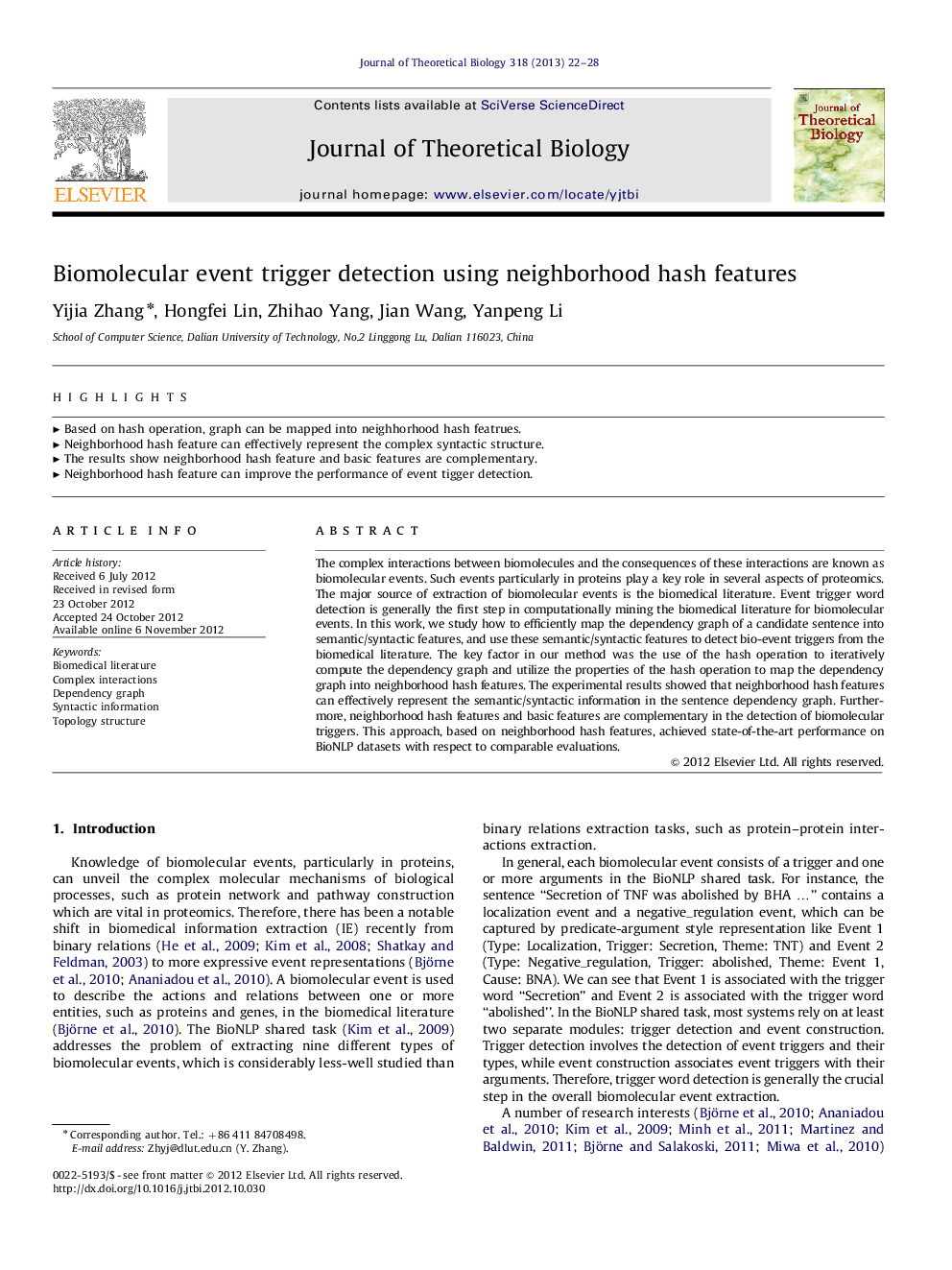| کد مقاله | کد نشریه | سال انتشار | مقاله انگلیسی | نسخه تمام متن |
|---|---|---|---|---|
| 4496497 | 1623892 | 2013 | 7 صفحه PDF | دانلود رایگان |

The complex interactions between biomolecules and the consequences of these interactions are known as biomolecular events. Such events particularly in proteins play a key role in several aspects of proteomics. The major source of extraction of biomolecular events is the biomedical literature. Event trigger word detection is generally the first step in computationally mining the biomedical literature for biomolecular events. In this work, we study how to efficiently map the dependency graph of a candidate sentence into semantic/syntactic features, and use these semantic/syntactic features to detect bio-event triggers from the biomedical literature. The key factor in our method was the use of the hash operation to iteratively compute the dependency graph and utilize the properties of the hash operation to map the dependency graph into neighborhood hash features. The experimental results showed that neighborhood hash features can effectively represent the semantic/syntactic information in the sentence dependency graph. Furthermore, neighborhood hash features and basic features are complementary in the detection of biomolecular triggers. This approach, based on neighborhood hash features, achieved state-of-the-art performance on BioNLP datasets with respect to comparable evaluations.
► Based on hash operation, graph can be mapped into neighhorhood hash featrues.
► Neighborhood hash feature can effectively represent the complex syntactic structure.
► The results show neighborhood hash feature and basic features are complementary.
► Neighborhood hash feature can improve the performance of event tigger detection.
Journal: Journal of Theoretical Biology - Volume 318, 7 February 2013, Pages 22–28